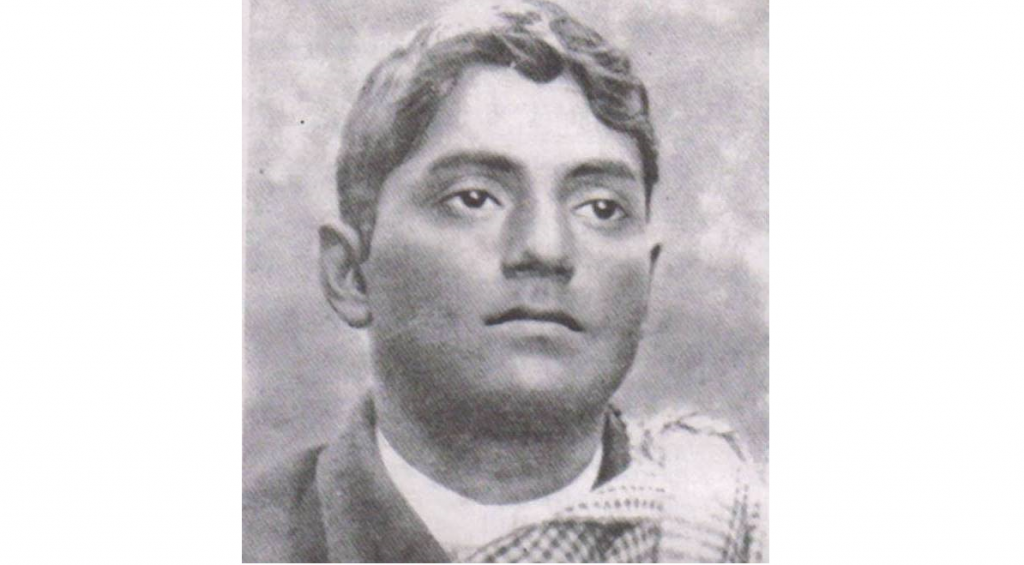Rup Narayan Das
Success has many fathers and failure is an orphan. This aphorism can be linked to the name of Jyotindranath Mukherjee popularly known as Bagha Jatin, who attained martyrdom while fighting the British in Chasakhand in Balasore district of Odisha. He died on 10 September, 1915. It is unfortunate that the supreme sacrifices made by Bagha Jatin and his associates are little known outside Bengal and Odisha.
A reference here is to an attempt in 1915 under the leadership of Bagha Jatin, Narendranath Bhattacharya who is better known as MN Roy and others, during the First World War, to attain Independence through armed insurrection in cooperation with Germany. The incident was a precursor of the later attempt by Subhas Chandra Bose in 1945 and the Indian National Army (INA), during the Second World War, with the support of Japan.
Born in 1879 in a village called Koya in Kushtia district of undivided Bengal (presently Bangladesh), Bagha Jatin joined the Khudiram Bose College in Calcutta in 1895. In 1904, he killed a tiger in a forest as it attacked one of his friends. He did so with the help of a dagger in an engagement lasting three hours. The incident earned him the epithet, Bagha (Tiger) Jatin.
Bagha Jatin was greatly influenced by the Bhagvad Gita and the writings of Bankim Chandra. The clarion call of militant nationalism mesmerised the youths but they were disillusioned by the slow pace of progress for Independence. The organisation that galvanised the spirit of nationalism was Jugantar and its icon was Bagha Jatin. Around 1905, he formed an association called Chhatra Bhandar. Although it was established as a student’s co-operative store entity, it was an outfit for revolutionaries.
MN Roy, the Communist of international fame, came to know of him in the later part of 1906 and accepted him as his leader. By early 1914, the country was agog with discontentment over the British rule and what added fuel to the fire was the promise of moral and material support to the revolutionaries in India from revolutionaries fighting for the cause of independence such as the Ghadar movement in Canada and the USA. It was against this backdrop that the outbreak of the First World War in 1914 ignited a militant nationalism here. The Indian revolutionaries in exile looked towards Germany as the land of hope.
Lala Hardyal of the Hindustan Ghadar Party in America was also carrying on similar activities. The legendary Rashbehari Bose went to Japan. By the end of the year, the news reached that the Indian Revolutionary Committee in Berlin under the leadership of Birendranath Chatterjee had obtained from the German government a promise of arms and funds required to declare the war of independence. Clandestine conferences led to the formation of a revolutionary outfit, with Bagha Jatin as the commander-in-chief.
In this backdrop, MN Roy left India in April, 1915 for Batavia (Djkarta) in Indonesia where he adopted the name CA Martin. Bagha Jatin, meanwhile, anticipating the arrival of the arms and ammunition and in order to avoid being caught by the police, especially after the Garden Reach dacoity, had left for Balasore in April 1915. There he and his loyal followers camped in Kaptipada area.
Unfortunately, however, the entire strategy for the armed rebellion got leaked. The British cordoned off the hideout of Bagha Jatin. There was exchange of firearms on 9 September at Chasakhand. A revolutionary by name Chittapriya Roy Choudhury died. Bagha Jatin was seriously wounded and was taken to the government hospital at Balasore, where he died the next day.
Although the armed uprising could not take off, it was a brilliant move. Rebel poet Kazi Nazrul Islam described it as the ‘Haldighat of New India’, and composed a beautiful poem in Bengali portraying the indomitable spirit of Bagha Jatin and his comrades. True, in the battle of Haldighat, Rana Pratap was militarily defeated but it ignited the flame of patriotism and nationalism.
The French philosopher Raymond Aron who supervised the thesis of Prithwindra Mukherjee, the grandson of Bagha Jatin on Sri Aurobindo at the Sorbonne University, observed that this story (of Bagha Jatin) is the missing link in our official history. He also saw in the person of Bagha Jatin the ‘thinker in action’.
The writer, a former joint secretary with the Union government, is currently a senior fellow of Indian Council of Social Science Research (ICCR) at Indian Institute of Public Administration (IIPA), New Delhi.
